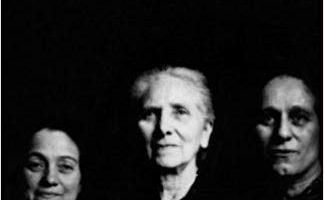What Can Orthodox Girls Control?
He is called “a magical friend” and a “human angel” by patients and colleagues, and is a constant presence in some of New York’s most religious Jewish communities. But more than 20 years after he first entered the traditional Jewish communities of Brooklyn, Dr. Ira Sacker is still a secret.
As the director of Adolescent and Young Adult Medicine at Brookdale University Hospital Medical Center and the director and founder of Brookdale’s HEED program (Helping to End Eating Disorders), Sacker—not Orthodox himself—has treated people with eating disorders in Brooklyn’s Orthodox, Hasidic, and Syrian Jewish communities since the 1970s.
In an age when eating disorders have become a cultural commonplace—estimated by the National Eating Disorder Organization to affect some five million Americans—few people know that observant Jewish communities are among the hardest hit. A study done by Sacker in 1996 found that in the Orthodox and Syrian Jewish communities in Brooklyn, one out of 19 girls was suffering from an eating disorder—a rate fifty percent higher than in the general population.
Twenty years ago, however, it was gut instinct and not statistics that drew Sacker to the religious community. “A few of the rabbis would let me into the schools, and I began to kind of talk about it. . . . Within about two or three years, I was at the schools and I could look around and see, clearly, that there were significant amounts of eating disorders that were right there in front of everyone’s eyes.”
There are many reasons, Sacker says, for the high rates. One is the centrality of food in Jewish tradition. (It “creates and celebrates everything,” he observes). But more compelling for observant teenagers and children is the fact that eating disorders can be quiet, internalized ways to assert control over their lives in the face of enormous pressures: to excel scholastically, to help parents care for large families, and above all to marry early and begin families of their own—sometimes before they feel ready.
Sacker also points out that a traditional upbringing provides few opportunities for adolescent rebellion. In an environment where even cigarette smoking is frowned upon for young women, eating disorders become ways for teenagers to act out within the culturally sanctioned medium of food. Add an enormous emphasis on slenderness—in some communities, Sacker says, parents worry that their normal-weight daughters won’t be attractive to potential husbands—and the eating disorder rates in observant communities come into perspective.
For Sacker, the biggest obstacle to fighting eating disorders in these communities is a code of secrecy. Having a family member with an eating disorder, he explains, can compromise an entire family’s marriageability.
“You can’t tell the skeletons in the closet,” says an Orthodox former patient of Sacker’s who agreed to speak only on condition of anonymity. “Otherwise, it’s going to affect your marriage.” She claims that if one member of a family is believed to have any sort of psychological illness, that family is typically crossed off the list of possible mates. “The secrecy is terrible for these girls,” she laments. “It’s like a death sentence: they would rather die than someone find out their secret.”
The paramount importance of privacy for observant patients was something that Sacker had to learn through trial and error. Today he arranges his clinic schedule to be sure that no two members of the same Jewish community have consecutive appointments, when they might encounter one another on the way in or out, and on HEED’s inpatient floor he makes sure that no two people from the same community are admitted simultaneously. “Right in the beginning, I didn’t know that they had to be segregated,” he remembers. “One followed the other, and I never saw them again.”
Sacker’s willingness to accommodate special needs has earned him unprecedented access to Orthodox communities. “I’m an outsider,” he says. “I never pushed. I knew that once you do that, the communities get very suspicious. And I would too.”
HEED now treats patients from Crown Heights, Williamsburg, Borough Park, Ocean Parkway, and as far away as the Hasidic enclave of Monsey, in Rockland County, New York. One of Sacker’s strongest allies has been Lubavitcher Rabbi David Goldwasser, of Brooklyn’s Congregation Bais Yitzchok. Goldwasser, who began working with Sacker after bringing an anorexic student to Sacker’s clinic, believes that people in his community are hungry for information, and that the rabbis can help.
“There’s a lot of ignorance in the area,” Goldwasser says. “Let’s provide some words about proper eating, health, taking care of oneself, body image, self-esteem, and slip that into a few of the sermons or seminars. It’s a very private illness. I think the first level is, let’s get a little bit out in the open.”


